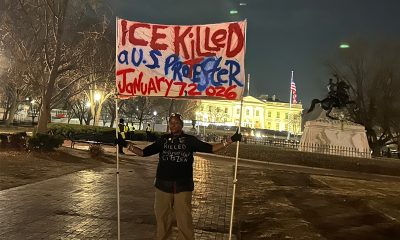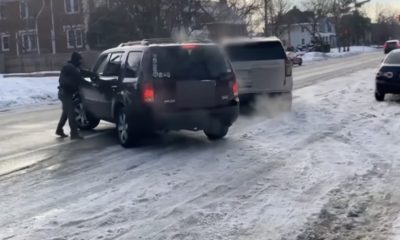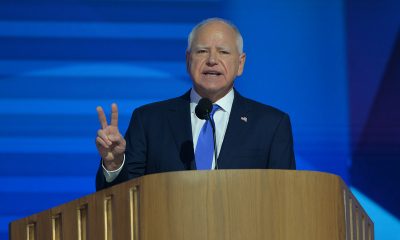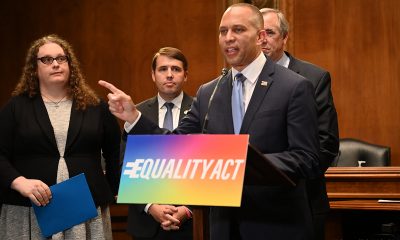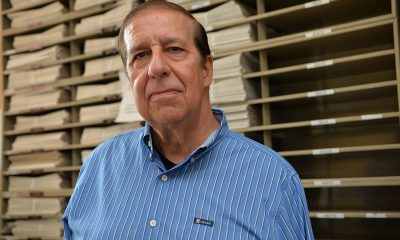Opinions
Social media can be a safe space for LGBTQ youth
Whether on Instagram, YouTube or TikTok, queer youth are able to connect with stories and insight that they not only relate to, but can use to help cope with and resolve their own struggles.
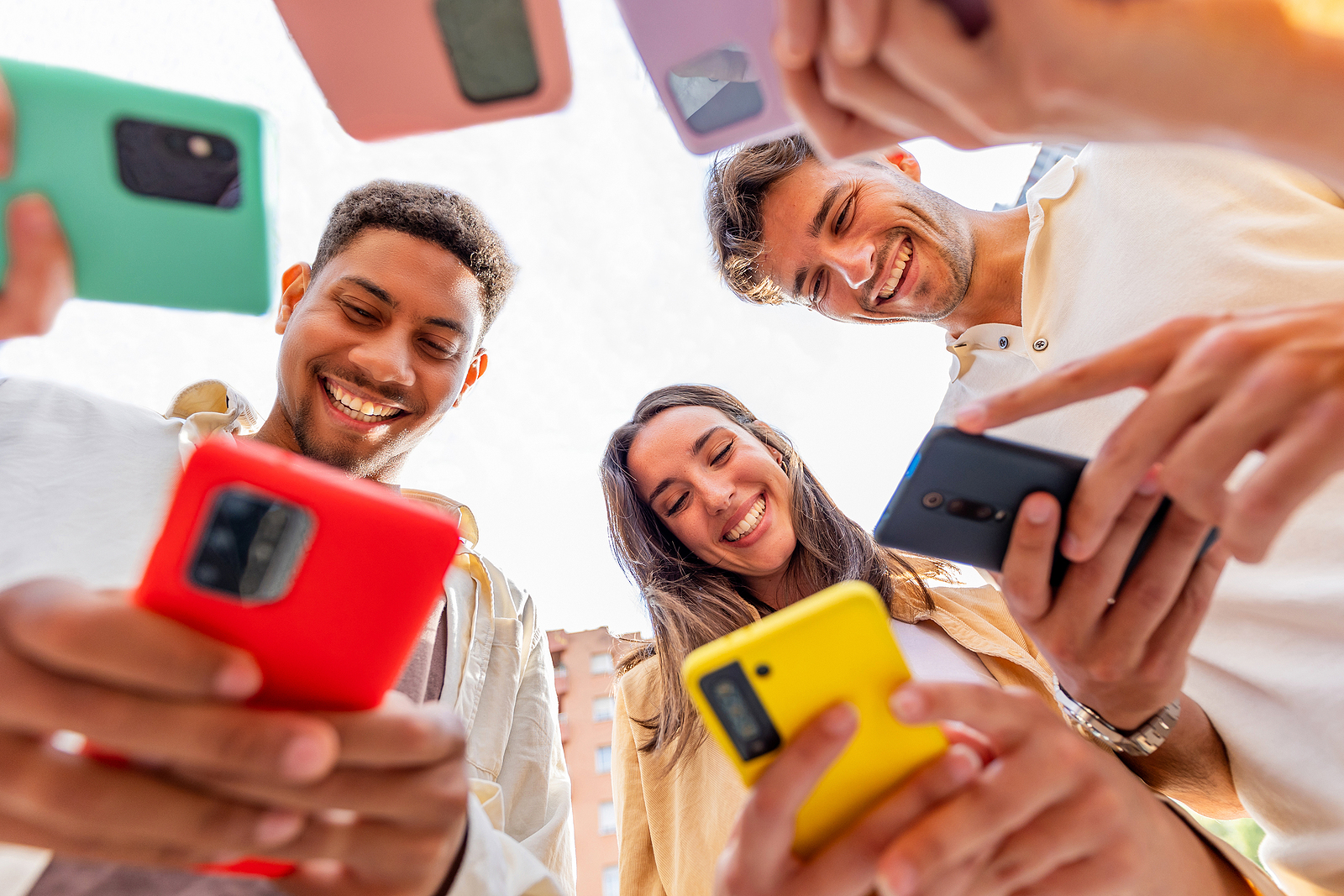
With all the bad press social media gets when it comes to teens, its significant benefits to LGBTQ youth – including relating to others like themselves – can be overlooked, mental health experts and queer teens say.
Members of racial and ethnic groups who have long been underrepresented or misrepresented in the media often say they find it empowering to follow and watch influencers with whom they can relate. In turn, they feel more understood and accepted.
Queer social media influencers are willing to talk about topics general audiences may be uninterested in, but what can be frequent occurrences in the queer community, such as disrespect, bullying, misgendering and loneliness. Influencers draw from their own life experiences. Whether on Instagram, YouTube or TikTok, queer youth are able to connect with stories and insight that they not only relate to, but can use to help cope with and resolve their own struggles.
A September 2022 meta-analysis of 26 studies in the Journal of Medical Internet Research found social media may help LGBTQ youth with connection to LGBTQ communities, identity management and support from peers, which all contribute to better mental health and well-being. However, researchers concluded that more robust studies are needed.
Don McClain is a 16-year-old Baltimore youth advocate, social media entrepreneur and artist of multiple mediums, who is nonbinary and uses they/them pronouns. They said it’s important for them to “be able to engage with queer influencers because it shows me that it’s okay to be authentically me.”
“It makes me feel loved and even makes me smile,” they said. “Seeing people like you always helps.”
McClain’s favorite queer influencers include Jewish social justice and LGBTQ+ activist Matt Bernstein, who has 1.3 million Instagram followers, trans woman Zaya Perysian, who chronicled her transition on TikTok, where she has 4.5 million followers and Ve’ondre Mitchell, a trans woman with 6.6 million TikTok followers who is an advocate for Black and transgender people.
Engaging with queer content creators can help viewers with acceptance, reassurance, and even safety. And it can provide answers to the questions that frequently overwhelm queer youth.
Washington, D.C.-based clinical psychotherapist Rose Shelton, who owns Your Thought Center in Washington, D.C. and often treats LGBTQ patients, discussed mental health trends in queer youth.
”Questions around self-worth, anxiety – usually associated around acceptance – violence and violent response…contribute to high levels of depression,” said Shelton.
She also cited insecurity around who’s “a real ally,” “a verbal ally” and “an actual actionable ally.”
This can have deadly consequences.
Forty-five percent of LGBTQ youth seriously contemplated attempting suicide between September of 2020 and December 2021, according to survey of LGBTQ youth conducted in late 2021 by the LGBTQ suicide-prevention nonprofit The Trevor Project. The survey also found that 78% experienced symptoms of anxiety in the past year and 58% experienced symptoms of depression.
Of the LGBTQ youth surveyed by The Trevor Project, 45% were of color and 48% identified as transgender or nonbinary.
The study, released last year, also found that 89% of LGBTQ youth reported that seeing LGTBQ representation in TV and movies made them feel good – a key indicator of the importance of representation to queer youth and seeing yourself reflected in the media.
“The fact that very simple things — like support from family and friends, seeing LGBTQ representation in media and having your gender expression and pronouns respected — can have such a positive impact on the mental health of an LGBTQ young person is inspiring, and it should command more attention in conversations around suicide prevention and public debates around LGBTQ inclusion,” Amit Paley, Trevor Project’s CEO, wrote about the survey.
These serious trends in mental illness for queer youth are influenced by a variety of factors, but a primary issue is not feeling accepted, which is largely due to a lack of acceptance at home, the report concluded. The lack of adequate representation in media including television and film makes matters worse.
Representation is important, but incomplete if it does not accurately paint a whole picture, experts say. Representation in traditional media, such as in books, films, and shows for the queer community often presents a portrayal that’s different from reality. In roles beyond the typical typecast queer character, the focus is usually on sensationalizing the struggle to come out or the struggle to combat anti-LGBTQ action.
Canadian writer Katelyn Thomson published an analysis of LGBTQ representation in TV and film in 2021 in Ontario-based Wilfrid Laurier University’s Undergraduate journal, Bridges.
“Ultimately, anxious displacement is how TV shows try to ‘normalize’ the lives of LGBT characters,” Thomson wrote. “However, the process ends up taking away from the identity of the LGBT characters and enforces negative codified stereotypes of LGBT people and their lives.”
While film and television depictions of the community can cause inaccurate portrayals, having queer representation is crucial to queer youth to feel accepted and allow them explore different identities and expressions.
“When used correctly, media can be a vital tool for representing, accepting, and discussing minority groups in society,” Thomson said.
McClain agrees.
“I believe queer youth can be better represented in the media through the displaying of our stories and breaking the stigma around our everyday existence,” they said. “For instance, we need more accurately queer characters and not the ones who are poorly stereotyped.”
So while there is frustration with social media, there are benefits too, especially because it lacks some of the flaws that can arise with queer representation in other forms of media, experts say. Social media can help break through the often one dimensional narratives and depictions of the community presented in film and television through its authenticity. Rather than the creation of a writer or director, it is more often an expression of raw authenticity. Queer influencers shouldn’t be taken as a way of how you should feel, how you should present yourself or how you should look, but instead as a way of seeing that there are many ways of doing so, making it beneficial to follow multiple queer influencers.
“I think sometimes the reason it’s important for social media, instead of…through media itself, is that media also has its own bias,” Shelton said. “And it loves to create stories and narrations and create characters out of people. So with social media, a lot of times people are just presenting their true self.”
Through different faces, forms, and presentations, queer influencers offer an impressive look at queer culture and talent. Here’s a look at some of them:
Noah Schnapp (He/Him)
The 18 year old actor, Noah Schnapp, is mainly known for his role as Will in the wildly popular Netflix series, Stranger Things. Noah is not only known for his acting, but also his very popular TikTok and Instagram accounts. He has cultivated more than 50 million followers between both accounts, where he often posts funny videos, TikTok dances and pictures with his castmates and friends. The Gen Z star recently came out as gay, sparking many of his co-stars, friends and fans to share their positive messages to Noah on social media. Seeing celebrities congratulated for accepting and embracing their sexuality helps other queer youth feel not only more represented in their favorite media but also confident in themselves knowing that their sexuality is something to celebrate and share.
Bretman Rock (He/Him)
Bretman Rock is a 24 year old Filipino beauty influencer, who is openly gay. He currently lives and produces content from Honolulu, Hawaii. His YouTube channel, which has more than 8 million subscribers, includes comedic lifestyle and beauty videos along with content including his family, friends and collaborations with other influencers. He also has over 18 million followers on Instagram as well. His charismatic and energetic personality and loyal fan base has helped him win many influencer awards and become the first gay man on the cover of Playboy magazine.
Tom Daley (He/Him)
The British gold medalist diver and openly gay 28 year-old has become famous not only for his incredible athletic capability but also his internet personality. He has over 3.2 million followers on instagram and is known for his lifestyle, cooking and knitting content. He is a father to one child, married to American screenwriter Dustin Lance Black and very open and proud of his sexuality.
Dylan Mulvaney (She/They)
The 26 year old trans influencer began to rise to fame on TikTok with their viral series, “Days of Girlhood” that documents each day of Dylan’s transition. The series began to become so popular it has helped Dylan generate 10.8 million followers on TikTok. Beyond being a content creator on TikTok, Dylan is also an actress, comedian, model and trans rights activist who was recently featured in what’s been described as a “polarizing partnership” with Bud Light.
Sarah Schauer (She/They)
Sarah Schauer is a popular queer social media influencer known for her Instagram and TikTok accounts, YouTube videos and podcasts with influencer Brittany Broski. She is also known for her previous Vine account. Sarah’s lifestyle and comedic videos helped her grow her fan base into what it is today – more than 3 million on the three social media platforms combined.
Emily Hawkins and Shane Gomez are juniors at Annandale High School working with the DMV-based Youthcast Media Group. YMG founder and former USA TODAY health policy reporter Jayne O’Donnell contributed to this report.
Opinions
Support the Blade as mainstream media bend the knee for Trump
From CBS to Washington Post, MAGA taking over messaging
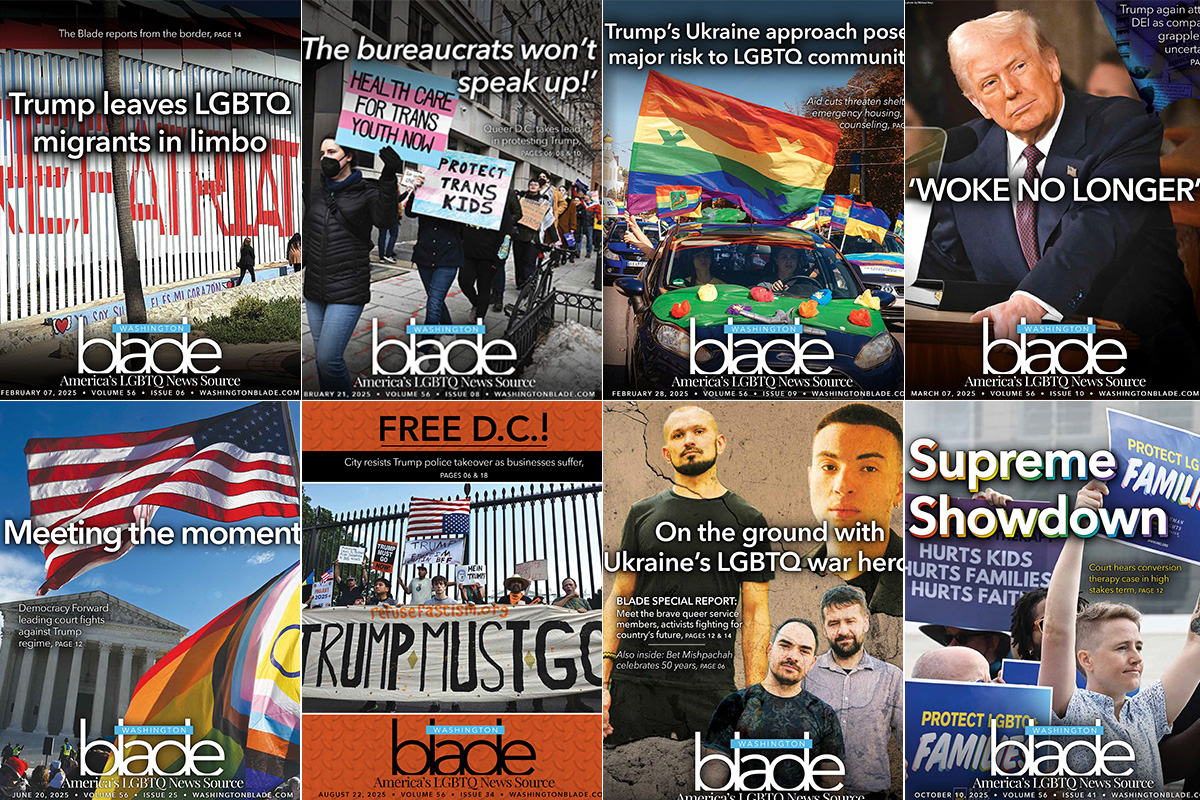
We knew it would be bad. I’m referring, of course, to 2025 and the unthinkable return of Donald Trump to the White House.
We just didn’t know how bad. The takeover of D.C. police. ICE raids and agents shooting defenseless citizens in the face. The cruel attacks on trans Americans. A compliant and complicit right-wing Supreme Court and GOP rubberstamping all the criminality and madness.
Much of that was outlined in Project 2025 and was predictable. But what has proven surprising is the speed with which major companies, powerful billionaires, and media conglomerates have hopped on board the authoritarian train and kissed Trump’s ring. Tech giants like Apple and Meta and media companies like CBS and the Washington Post have folded like cheap tents, caving to MAGA pressure and enabling Trump’s evil agenda.
The guardrails collapsed in 2025. Congress has ceded its role as a formerly co-equal branch of government. Once trusted media outlets have betrayed their audiences’ trust and morphed into propaganda arms of the White House. As a lifelong journalist, this is perhaps the most shocking and disappointing development of the past year.
The Washington Post, which adopted the ominous tagline of “Democracy Dies in Darkness,” killed its endorsement of Kamala Harris in the final days of the 2024 campaign. Same thing at the Los Angeles Times. More recently, CBS’s vaunted “60 Minutes” spiked a story critical of Trump’s immigration policies under the direction of new editor-in-chief Bari Weiss, a Trump toady and the antithesis of a journalist.
Concurrently, media companies large and small are fighting to survive. Government grants have been rescinded and the Corporation for Public Broadcasting, responsible for funding NPR and PBS, announced plans to dissolve. The Pittsburgh Post-Gazette, a nearly century-old Pulitzer Prize-winning institution, announced this week it will close on May 3. The Washington Post has lost scores of talented journalists, including prominent LGBTQ voices like Jonathan Capehart. The Baltimore Sun was acquired by the same family that owns right-wing Sinclair Broadcasting, ending a nearly 190-year tradition of award-winning, independent journalism.
It is not a coincidence that Trump’s attacks on democracy, traditions, and norms are happening while the media industry collapses. News deserts are everywhere now. In 2024, 127 newspapers closed, leaving 55 million Americans with limited or no access to local news, according to a report by Medill.
There’s a reason the media are called the “Fourth Estate.” Journalism was considered so critical to the health of our democracy that the Founding Fathers spelled it out in the First Amendment. Democracy and our Constitution cannot survive without a free and robust press.
That’s why I felt compelled to write this appeal directly to our readers. For nearly 57 years, the Blade has told the stories of LGBTQ Washington, documenting all the triumphs and heartbreaks and writing the first draft of our own history. Today, we remain hard at work, including inside the White House. This week, we have a reporter on the ground in Colombia, covering the stories of queer Venezuelan migrants amid the crisis there; another reporter will be inside the Supreme Court for next week’s trans-related cases; on Sunday, we have a reporter on the red carpet at the Golden Globes ready to interview the stars of “Heated Rivalry.”
We do a lot with a little. As major companies pull back on their support of the LGBTQ community, including their advertising in the Blade, we turn to our readers. We have never charged a dime to read the Blade in print or online. Our work remains a free and trusted resource. As we navigate these challenges, we ask that you join us. If you have the resources, please consider making a donation or purchasing a membership. If not, please subscribe to our free email newsletter. To join, visit washingtonblade.com and click on “Fund LGBTQ Journalism” in the top right navigation.
Our community is known for its resilience. At the Blade, we’ve weathered the AIDS epidemic, financial crises, and a global pandemic. We are committed to our mission and will never bend to a wannabe dictator the way so many mainstream media outlets have done. The queer press is still here and with your help we will survive these unprecedented attacks on democracy and emerge stronger than before. Thank you for reading the Blade and for considering making a donation to support our work.
Kevin Naff is editor of the Washington Blade. Reach him at [email protected].
Opinions
Time has run out for the regime in Venezuela
American forces seized Nicolás Maduro, wife on Jan. 3
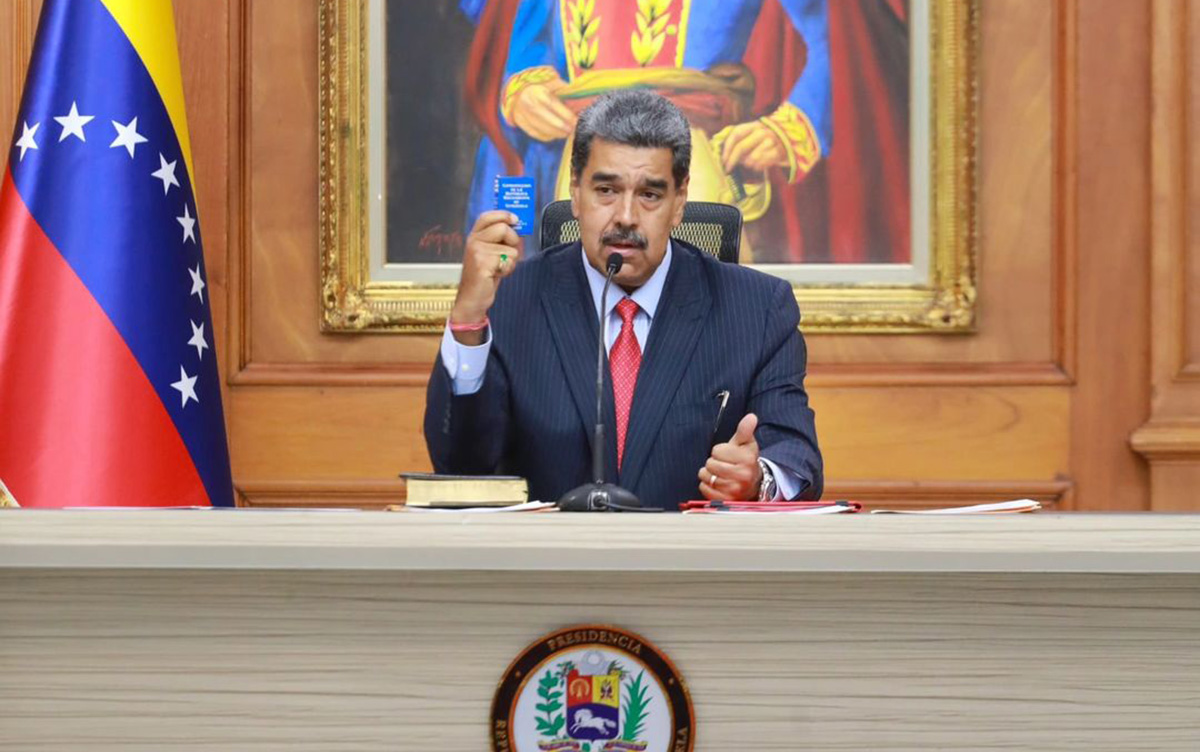
Time has run out for the regime in Venezuela.
I am fully aware that we are living through complex and critical days, not only for my country but also for the entire region. However, the capture of Nicolás Maduro has renewed hope and strengthened my conviction that we must remain firm in our cause, with the certainty that the valid reward will be to see Venezuela free from those who continue to cling illegitimately to power.
In light of this new reality, I adopt a clear, direct, and unequivocal position:
I demand the immediate release of all political prisoners.
I demand that all persons arbitrarily detained for political reasons be returned to their families immediately, without delay or conditions.
According to Foro Penal, as of Jan. 5, 2026, there are 806 political prisoners in Venezuela, including 105 women, 175 military personnel, and one adolescent, and a total of 18,623 arbitrary arrests documented since 2014. The same report documents 17 people who have died while in State custody and 875 civilians prosecuted before military courts, clearly evidencing the use of the judicial and security apparatus as instruments of political persecution. In parallel, the humanitarian system estimates that 7.9 million people in Venezuela require urgent assistance, further aggravating the impact of repression on daily life.
Behind these figures are shattered lives, separated families, and destroyed life projects. Students, activists, human rights defenders, political leaders, and members of the armed forces remain imprisoned without judicial guarantees, without due process, and without justice.
Since the capture of Nicolás Maduro, repression has not ceased. On the contrary, more than ten journalists have been arbitrarily detained, while others have been harassed, imprisoned, or mistreated for carrying out their duty to inform. Today, journalism in Venezuela has become a heroic and high-risk act.
This situation is further aggravated by a new attack on fundamental freedoms: an illegitimate decree of “external state of emergency”, whose purpose is to legalize state terrorism, expand the scope of repression, and deepen the criminalization of dissent and freedom of expression.
The destruction of freedoms cannot and must not be normalized, either by society or by the international community.
I do not forget the atrocities committed against people deprived of their liberty: systematic violations of due process, torture, cruel, inhuman, and degrading treatment, denial of medical care, and prolonged isolation.
These practices have been widely documented and denounced and are currently under investigation by international justice mechanisms.
In this regard, the United Nations Independent International Fact-Finding Mission on Venezuela has repeatedly expressed grave concern over the persistence of serious human rights violations, including the use of torture, enforced isolation, and the responsibility of State security forces in systematic abuses, as reflected in its statements and reports issued on Jan. 3, 2026, and throughout 2025.
From my unwavering commitment to human rights, I issue a firm and urgent call to Venezuelan citizens and to all people in the free and democratic world to stand together in defense of human dignity.
All political prisoners must be released now.
All torture and detention centers must be closed.
I am convinced that there can be no genuine democratic transition without the immediate release of political prisoners, the submission to justice of those responsible for arbitrary detentions, and the establishment of accountability mechanisms, guarantees of non-repetition, and full reparation for victims and their families. This is the only viable path toward a proper transition to democracy in Venezuela.
Today, more than ever, I stand in solidarity, inside and outside Venezuela, with the victims and their families.
This is a moment of definition, not of silence or hesitation.
I assume, together with millions of Venezuelans, that we are co-responsible for our collective reality and for the new Venezuela that we are called to rebuild.
Dignity, freedom, and justice cannot wait.
Freedom for Venezuela.
Juan Carlos Viloria Doria is president of the Global Alliance for Human Rights and vice president of Venezolanos en Barranquilla, an NGO based in Barranquilla, Colombia.
Opinions
Just say no to the felon in the White House
Democrats, media must do more to oppose Trump’s agenda
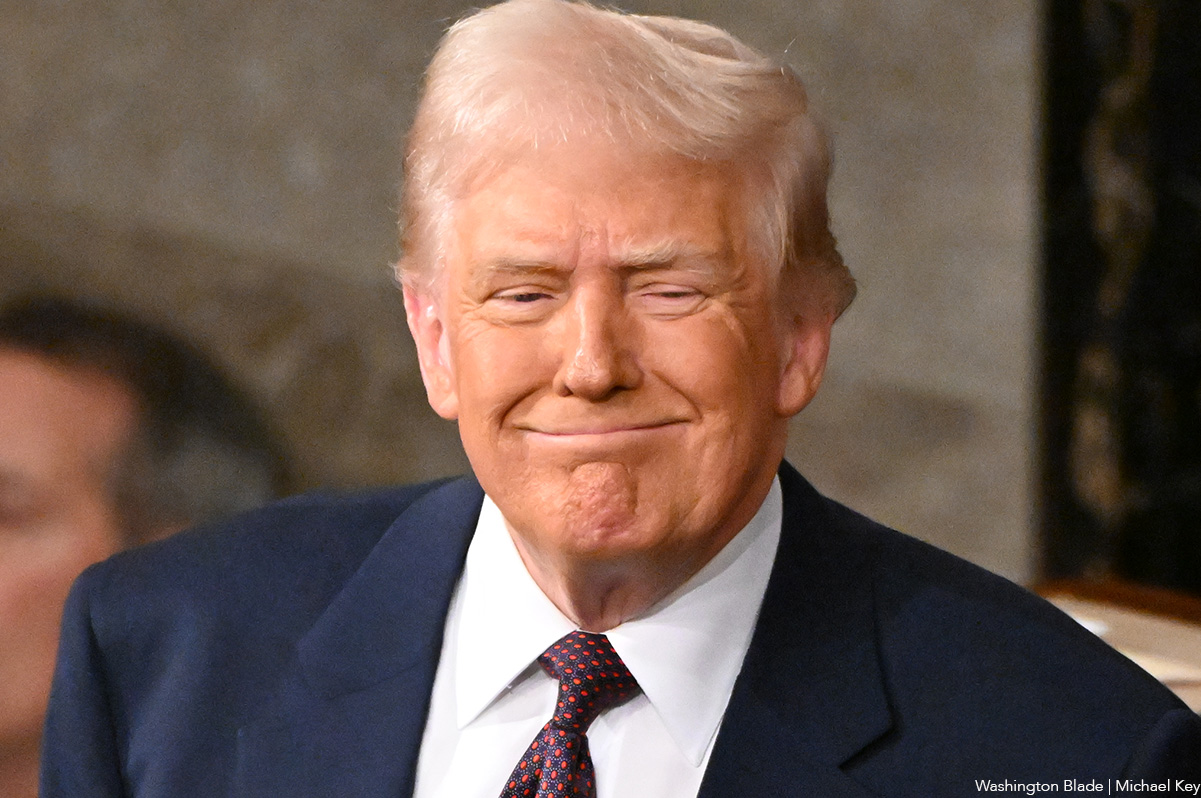
We have a clearly deranged, sick, felon as president, who can’t even remember if he had an MRI, or a CT. He says he takes enough aspirin to keep his blood running thin in his veins. He fakes health reports, and lies every time he opens his mouth. His brain appears foggier than Joe Biden’s ever was.
The felon arranged to get a fake Peace Prize from the soccer federation, while taking military actions around the world. He sanctioned American attacks on Nigeria, Iran, Syria, and now on the government, and people, of Venezuela. He has our military attacking boats, claiming they are carrying drugs, with no proof. He interferes in foreign elections, making the United States less safe. He obviously supports Putin in his war against Ukraine, and supports Netanyahu’s destruction of Gaza, and his starvation of the Palestinian people there. Because of all this it’s understandable why he calls his Secretary of Defense, his Secretary of War. That individual being unqualified with no competence, or decency — the perfect toady for the fascists surrounding Trump. He has a Secretary of State in Marco Rubio who clearly has no principles at all. Rubio previously said, “Donald Trump – a con artist – will never get control of this party…We cannot allow a con artist to get access to the nuclear codes of the United States of America.” He compared Trump to a “third-world strong man.” Now as Secretary of State he justifies all the illegal actions the felon takes.
I, and many others, question “Where is Congress in all this?” Do no Republicans in Congress have any cojones? Two Republican woman have criticized Trump — Marjorie Taylor Greene (R-Ga.) and Nancy Mace (R-S.C.). Both on the Epstein files, one on screwing the American people with regard to their health insurance. Both are now out of Congress, still MAGA, but found if you disagree with the felon, he sics his cult on you.
My other question is: When will any in the media really stand up to him? When do mainstream media call out every one of his lies, as he makes them? When do they show any guts, and repeat each day he is deranged? When do they have daily headlines, calling him out on things from his health reports, to lies about the economy? Where are the daily headlines calling out the Republican Congress for its lack of action? Why is there no representative clock on every TV network, ticking off the time Congress doesn’t take back their rightful place as an equal branch of government? When will they call out the Supreme Court, reminding people what Trump’s picks said during their confirmations, versus what they are doing now? When will they actually reclaim ‘The freedom of the press?’
Democrats must continue to speak out. I am aware they have little power in this Congress, but they must not remain silent. We have seen, when they do speak up, we win elections. They help the people to wake up, as they did in recent elections in New Jersey and Virginia. In races as distinct as the mayoralty of Miami, where a Democrat won for the first time in 30 years, and did so in a landslide; and Democrats won two special elections for State Senate in Mississippi. In Georgia, Democrats won two seats on the Georgia Public Service Commission, the first time in 20 years they won a statewide seat. And they won a State Senate seat in Iowa, and the redistricting vote in California.
To continue winning Democrats must remind people every day what the felon, and his fascist cohorts, are doing to destroy their lives. Latinos and Hispanics need a daily reminder, it is the felon who once said he supports them, whose government is now deporting them. Young people must be reminded every day, the felon is destroying the country they will inherit, their future, by denying climate change. Everyone needs daily reminders how he is destroying the health of the country. Ending research grants looking for cures for cancer, Alzheimer’s, Parkinson’s, and HIV/AIDS. Ending research grants into curing childhood diseases, development of mRNA vaccines, and other potential progress to protect Americans, and the world, when the next pandemic occurs, and it will. He is literally killing children by having his government speak out against vaccinations for illnesses like measles, considered eradicated before he came into office.
All of this needs to be headlined each day in our newspapers, and on TV, by the people who still can, and are willing, to do it. Those not bought off by, or afraid of, the felon, and his fascist cohorts. Those who don’t sit with him at Mar-a-Lago, and have become his enablers. We the people need to take to the streets and every time there is an election, use our vote to say to the sick, deranged, felon, and his fascist cohorts, ‘NO MORE’.
Peter Rosenstein is a longtime LGBTQ rights and Democratic Party activist.
-

 National3 days ago
National3 days agoWhat to watch for in 2026: midterms, Supreme Court, and more
-

 District of Columbia4 days ago
District of Columbia4 days agoTwo pioneering gay journalists to speak at Thursday event
-

 Colombia4 days ago
Colombia4 days agoBlade travels to Colombia after U.S. forces seize Maduro in Venezuela
-

 a&e features4 days ago
a&e features4 days agoQueer highlights of the 2026 Critics Choice Awards: Aunt Gladys, that ‘Heated Rivalry’ shoutout and more

